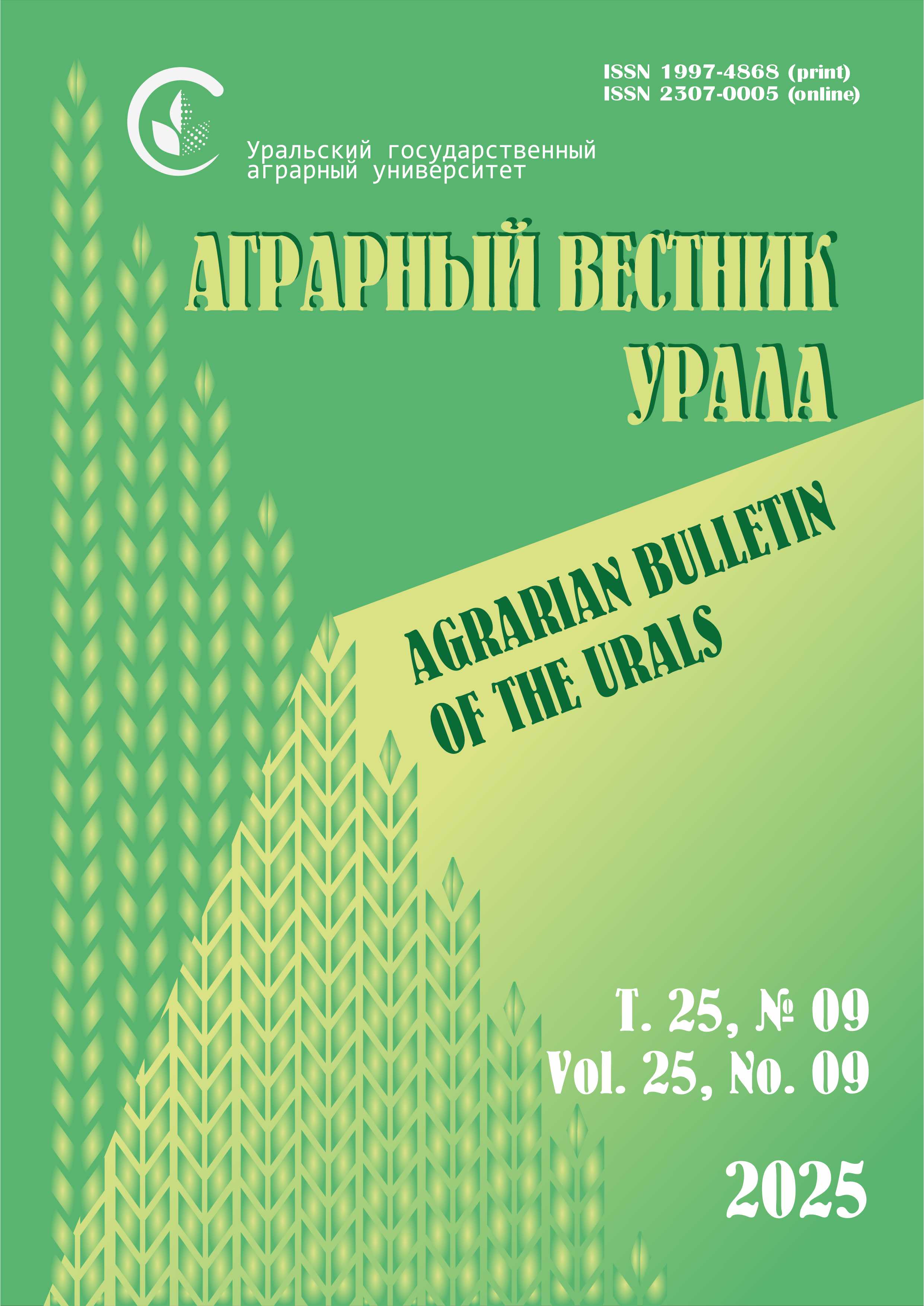N. G. Lapenko, M. A. Starostina, R. D. Kostitsyn
North Caucasus Federal Scientific Agricultural Center, Mikhaylovsk, Stavropol Territory, Russia
E-mail: This email address is being protected from spambots. You need JavaScript enabled to view it.
Volume 25 No. 5
Date of paper submission: 04.02.2025, date of review: 18.03.2025, date of acceptance: 04.04.2025.
Published: 05/31/2025
Abstract. The article presents a map of the current state of the steppe vegetation of the arid territory of Stavropol, which is in the status of agricultural land and is a natural food base for farm animals with a legend. It is based on soil, climatic and ecological conditions, the composition of the vegetation cover of steppe communities with the allocation of dominant and co-dominant species characterizing vegetation types and their plant modifications. The purpose of the work is to cartographically how the actual state of steppe communities based on the analysis and generalization of geobotanical survey materials of their vegetation cover. Methods. The vegetation map was created based on the materials obtained during the ground-based geobotanical survey of steppe vegetation and the analysis of field materials. The legend is based on the classification of vegetation by territorial (zonal) affiliation. A geobotanical vegetation map of steppe phytocoenosis has been created based on field materials and classification of vegetation cover of steppe ecosystems using geoinformation technologies. The results of the study. It is shown cartographically that the vegetation of steppe communities, used for grazing (often overgrazing) farm animals, is occupied mainly by low-yielding annual-herbaceous, wormwood, annual-wormwood plant modifications (C-2AI-3b, C-2A-II-4b, C-4A-I-1b, P-1B-I-1b, P-5A-I-6b). The territories most unfavorable for animal grazing are represented by plant modifications (C-3A-II-6b, P-1B-I-4b, P-3A-II-9b). It has been established that a significant part of the vegetation of steppe phytocoenosis of the mapped territory needs phytomeliorative measures to improve the grassland of steppe lands or restore it. Of particular value, as potential testes, are fragments of vegetation that preserved the core of the virgin flora ‒ species of cereals: bush-grass, fescue (C-2A-II-1, C-2A-II-3, C-5A-I-2, P-1B-1-1, P-3A-I-7). Scientific novelty. Based on the analysis of materials from the geobotanical survey of the arid territory of the Stavropol Territory, the actual state of the vegetation cover of steppe communities is shown cartographically for the first time.
Keywords: animal grazing, geobotanical contours, vegetation type group, vegetation map, food base, map legend, vegetation modifications, steppe vegetation
Acknowledgements. This research was funded by Russian Science Foundation № 24-26-20027, https://rscf.ru/en/ project/24-26-20027/
For citation: Lapenko N. G., Starostina M. A., Kostitsyn R. D. Mapping the steppe vegetation of an arid territory Stavropol Territory. Agrarian Bulletin of the Urals. 2025. 25 (05): 690‒702. https://doi.org/10.32417/1997-4868-2025-25-05-690-702 (In Russ.)
Download the full text of the article












